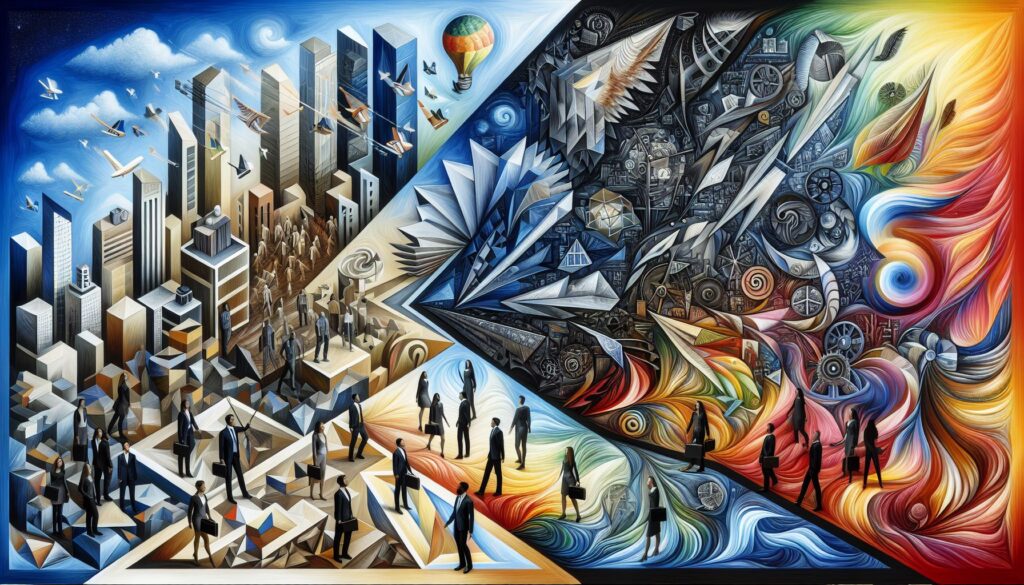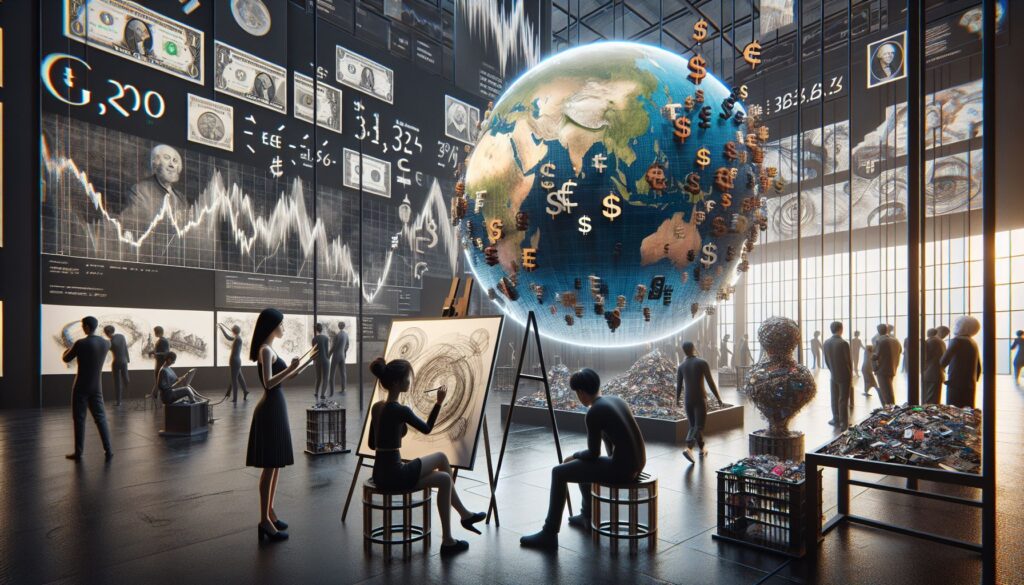From bustling art fairs to eclectic galleries, the contemporary art scene is a vibrant and captivating domain. More than subjective interpretations of beauty and form, contemporary art often mirrors society’s complex dynamics, shaping discourse and probing into modern existence’s depths. This creative realm presents an intriguing convergence with the world of business – a meeting of cultural and commercial landscapes that reflect trends, challenge norms and influence future trajectories.
Within the business sector, remarkable developments are increasingly reflected in the art industry, not merely as analogies but as tangible, aesthetic movements that catalyze discussions and shift perspectives.
Recent years have signaled an unprecedented rise in emerging artists harnessing the power of digital platforms to facilitate their craft. Platforms like TikTok, Instagram, and Patreon are serving as accessible outlets for creators to engage with broad audiences, promote their work, and generate income. In response, traditional brick-and-mortar galleries are also pivoting, adapting digital strategies to compete in an increasingly online marketplace.
Across the canvas of the global economy, these digital shifts are painting a new era of accessibility in art consumption and market competition. In the business realm, it marks a poignant juxtaposition, where creativity meets technological innovation, challenging preconceived notions of market norms and customer engagement.
Venturing into the works of established artists, one can observe complex, contemporary narratives mirroring business trends. Take the example of Damien Hirst, a leading figure in the art world who, on multiple occasions, has disrupted traditional transaction avenues by circumventing galleries and auction houses to sell his art directly to the public. This strategy echoes the rise of Direct-to-Customer (DTC) business models that emphasize customer relationships and personalized experiences over traditional middleman approaches.
Similarly, crypto art and non-fungible tokens (NFTs) emerge as representations of blockchain technology’s impact on business models and transactions. Artists like Beeple push boundaries, creating and selling digital art through NFTs for millions, demonstrating the transformative power of technology on commerce and art alike.
Looking forward, a contemplative lens reveals a sea of uncharted potential for business and modern art to evolve, adapt, and disrupt. As we navigate through volatile economic climates, it is pertinent to note that evolution will likely be symbiotic, with business and art influencing each other’s practices, challenging norms, and shaping future landscapes.
In essence, monitoring this crossroads of art and business offers invaluable insights into a society composed of economic systems and artistic expressions. The interplay between these two fields serves as a critical reflection on our collective narratives, providing a unique view into our potential trajectories as a modern society.
In conclusion, the convergence of contemporary art and business presents a canvas ripe for exploration and reinterpretation. Just as changes in the business landscape reflect into the art industry, so do shifts in artistic currents echo in commercial contexts. Observing and understanding these intertwined movements may offer us the tools to stay ahead in both sectors whilst deepening our appreciation for the rich tapestry of modern life.




